So maybe you’ve been interested in hanfu for a while, and you’ve vaguely started to pick out the differences between Ming Dynasty aoqun and Tang Dynasty heziqun, but you still have no clue what the order of the time periods are or even what they were characterized by. Upon a quick sift through Wikipedia, there’s just wayyyyy too much information to process, and you don’t even know what information to look for—what matters to your understanding of hanfu culture. Fear not! Here’s a compendium of what you need to know about the historical context of hanfu.
The Structure of Ancient Chinese History
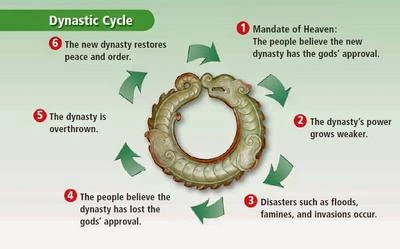
There’s a phenomenon in Chinese history that we call the Dynastic Cycle. Ancient China was ruled over by many different time periods called Dynasties, each with a family of rulers, and most of these follow the same general scheme: the central ruling power is established, the population goes up and the country flourishes, corruption starts affecting the political scheme, people revolt, and the country either dissolves into several warring states or gets conquered by another group of people. Then one state emerges victorious over the other ones or the invaders, the next dynasty is established, and the cycle repeats.
With hanfu, we generally look at dynasties as sections of history in which cultural trends and norms are established. It’s important to remember, however, that ancient China lasted for a very very long time in comparison to the USA or medieval Europe, and that while we tend to generalize clothing types in dynasties, there is an enormous amount of variance in fashion within just a few years, let alone a few centuries. The clothing trends that we see within one dynasty is also likely to be more aristocratic and expensive, because those are the clothing items that are best preserved, so there will be a significant amount of bias towards the wealthy population’s fashion trends as opposed to that of the common people—we only have so many primary sources to work off of.
Lastly, as usual, remember that all the information that I personally put out is just research I’ve done on my personal time! Due to the fact that I lack the proper professional training and rigorous education of a historian I cannot guarantee that all of my sources are 100% reliable and that all of the information I have found is correct, and because hanfu research is a personal project of mine I don’t have the time to cite all my sources in these articles, though I’m happy to send links of where I found information if I’m directly asked. Please check first if you plan on making any important decisions with regard to the information I put out (although I honestly have no idea what decisions those would be).
Where It All Started: The Han Dynasty (漢,202bce-220ce)
Okay, it’s not really where it all started. Ancient Chinese history goes back way further than the Han Dynasty, it’s just that a) it’s a little bit weird to say “hanfu,” or “clothing of the Han people,” before the term “Han people” was coined, b) before the Qin Dynasty everything was a lot more chaotic and c) it was literally just a really long time ago and we have very little information on what clothes look like back then.
The Han Dynasty proceeded the very short Qin Dynasty, which was the single-ruler dynasty in which Qin Shi Huang (yes, that guy) did all his cool stuff and forcefully united China. It was ruled over by the House of Liu, to which all of the Han Dynasty emperors belonged. Its influence can be seen in the names we use for ourselves today: we call ourselves Han people, our written language is Han characters, our language is called the Han language. The economy of the Han Dynasty increased rapidly and some of China’s most famous advances—negative numbers in math, paper making, the waterwheel, and the establishment of the Silk Road from the capital Chang’an (these days Xi’an) all the way to Rome, allowing the economy to expand into Europe.
We generally separate the Han Dynasty into two periods, Western and Eastern Han. They’re divided in the middle by a not-that-popular but still powerful Xin Dynasty of the House of Wang for all of, like, a decade and a half (the Western Han rulers got overthrown because of some destabilization in the Han government) but then after bad management, conflicts with the Xiongnu confederation, and a bunch of natural disasters, plus the fact that most people were still pretty loyal to the Han Dynasty, the Han rulers got the place back, beginning the period known as the Eastern Han.
Culturally, the Han Dynasty mostly followed Confucian philosophy, valuing the social order of family and filial piety greatly, along with some folk religion. While the Han Dynasty was patrilineal and gave women far fewer rights than men (in line with Confucian ideals), there is significant evidence that the ladies were fairly badass and still found several ways of getting power, resulting in some women (especially mothers) being much more powerful than their husbands, fathers and sons. Women were largely responsible for supporting the textile industry, forming collectives for spinning silk, and also became talented merchants and physicians.
A lot of what we know about life in the Han Dynasty comes from a couple eerily well-preserved tombs including the Mawangdui Han Tomb, which I have a detailed article on here. Otherwise it’s mostly written records and murals and that sort of thing. Wealthy people afforded clothing made of silk and fur, while most commoner’s clothing was made of hemp at the time. We know that at the time the model of the shenyi, or full-length robes that covered the body neck-to-floor in one garment, was popular over the structure of one garment covering the upper body and one garment covering the lower body, though we have evidence that separate skirts were layered over or under full robes. The two silhouettes most commonly seen are the zhiju and quju robes, which describe robes with straight hems sweeping around the floor at the same height, and robes with curved hems spiraling up the body, respectively.
After a few rebellions by peasants and Taoist religious groups, the Han Dynasty dissolved into three kingdoms, which the Romance of the Three Kingdoms is based on. China remained in a tumultuous time period for quite a while after that.
Plunged Into Chaos: Wei Jin Northern and Southern Dynasties (魏晉南北,266-589ce)
For most of the other dynasties you’ll see one flourishing cohesive dynasty followed by a period of non-Han rule and then the next flourishing dynasty. For this one, though, we have to take a little pause in the chaotic period between the Han and Tang Dynasties: the Wei/Jin Northern/Southern Dynasties, or the 魏晉南北朝/Wei Jin South North Dynasty. As the name implies, it was made up of a whole lot of little dynasties, because the power shifted so quickly.
Unfortunately, similar to other warring periods, there were few preserved pieces during this time period—people were more busy fighting than trying to make their burials last forever—but I’m pretty sure someone’s gonna get mad at me if I don’t include anything about it here. The gist of it: the Western Jin Dynasty merged the three kingdoms for a bit, everyone got mad at everyone, rich people fought each other for power, Buddhism started getting kind of popular, whatever whatever, at some point the Tang Dynasty came in and stopped the chaos. What’s most important about this time period is the decline in Confucian thought and the cultural mixing resulting from such rapid changes, which diversified China quite a bit. This is reflected in clothing at the time as the influences of minority ethnic groups impacted Han fashions continually, and we can see traces of that in fashion trends that came and went very quickly, with details like shoulder stripes and the separation of tops and bottoms that are typically considered as originating from other cultures.
The last dynasty in this time period was the Sui Dynasty, which laid the foundations for the Tang Dynasty later on.
The Golden Age: Tang Dynasty (唐,618-907ce)
The Tang Dynasty was headed by the House of Li. Known as one of the most diverse, progressive, and plentiful periods in history, it’s no wonder that the Tang Dynasty is a favorite of many. Not only was cultural exchange between India, Japan, and other nearby countries extremely encouraged by the Tang Dynasty, this was also a period of feminism, religious diversity, and of course artistic talent that rivals any other. Even today, very few places allow foreigners to hold positions of political power in the primary government—the Tang Dynasty people were fine with that. Famous poets like Dufu and Li Bai also lived during the Tang Dynasty, as well as the iconic Yang Guifei.
How progressive can a country really be, less than a thousand years into the Common Era? Compared to much of the rest of the world, very progressive. On the side of religion, the Sogdians brought Buddhism into China fairly early on, and it became one of the most popular religions in the country, along with Taoism from the past. Christianity, Zoroastrianism, and Manichaeism were also welcomed. Governments steered away from the feudal system and gave their workers mandated vacations for weddings, funerals, family visits, and ceremonies of children; the Silk Road was reopened and more lively than ever.
We always have to talk about women, as they have consistently been the center of the textile industry—and the Tang Dynasty is no exception to that. In fact, feminism in the Tang Dynasty is particularly worth discussing. The beauty ideals in this time period are especially different from what we have today: the ideal Tang Dynasty woman was not only plump and round like the moon, she was also assertive and educated, able to improvise poetry and music at the drop of a hat. The middle of the Tang Dynasty featured the only female reigning empress, Empress Wu Zetian, in Chinese history—not empress as in the emperor’s main wife, but empress as in the female monarch of the empire. I won’t go over her in too much detail but she’s SUPER interesting and if you wanna know more you should definitely look her up! Even aside from when she briefly took over and established the Wu Zhou Dynasty, there were a lot of social changes that represent the progressiveness fairly well: the famous yuanlingpao or round-collar robe became popular with women during this period, when it used to only be a men’s garment, setting the precedent for women’s yuanlingpao for centuries to come.
In terms of art, there’s no better example of cultural golden ages than the Tang Dynasty. Dufu and Libai lived during this period, and their poetry in the form of the shi are still regarded as the best poetry in all of Chinese history. Another famous artistic technique we see often is the Tang Sancai, a form of glazed pottery using green, brown and white glazes to color pots and sculptures. Some of the fabrics and clothing we reference are Sancai sculptures, unearthed from various tombs. Cultural flow happened between Japan and the Tang Dynasty so much that many say Japan retained the true spirit of the Tang Dynasty, and Buddhism was at its height, leading to the murals on the Dunhuang caves and colorful new styles in clothing.
As all dynasties must end, the Tang Dynasty ended its golden reign in chaos and rebellion caused by natural disasters, unrest of the people, and foreign forces seeking to take over. As the power moved from the imperial government to regional rulers that gradually took over, the Tang Dynasty dissolved into the Five Dynasties Ten Kingdoms period, rapidly changing an overlapping dynasties and kingdoms that bridged the gap between the fall of Tang and rise of Song.
The Scholar’s Paradise: Song Dynasty (宋,960-1279ce)
While we often think of the Tang Dynasty as a golden age of culture and art, the Song Dynasty isn’t usually far behind—and the technological advancements in this time period were the apex of China’s science and engineering feats. Headed by the House of Zhao, the Song Dynasty’s most important contribution to China’s governmental structure was probably the establishment of the tiered meritocracy system—the civil service exams (technically they were already in place the Song Dynasty just made them more structured and permanent)—that allowed people to become government officials based on intellect, testing them on problem-solving and poetry in order to rise through the ranks of the government. Great emphasis was placed on the cultural arts of tea, painting, music, and poetry. Unfortunately, the military power of the Song Dynasty was somewhat lacking (with the naval force a notable exception to this), since they placed so much more emphasis on scholars than militants, but their technological advancements were nonetheless impressive enough to sustain them for centuries.
We generally divide the Song Dynasty into two periods: the Northern (earlier) Song and the Southern (later) Song. Northern Song spent around sixteen years reuniting all of China from the Five Dynasties and Ten Kingdoms period, and maintained relations with several countries including the Byzantine Empire, India, Egypt, and more. In the middle of the Song Dynasty, however, political upheaval and long-standing military weakness led to the Jin Dynasty (not the one from before, this one is Jin with a first tone, meaning gold), newly established by the Jurchens, rebelled and captured the capital of Kaifeng, pushing the Song Dynasty south of the Yangtze River, where they established Southern Song. Here the nation established a strong navy and developed better military technology and forces, allowing them to hold off the Jin Dynasty, but the Mongols—headed by the infamous Genghis Khan—took over the Jin Dynasty soon after and began their conquest on the Song. After a long battle over the Yangtze River, the Song Dynasty was no more.
The intellectual arts were particularly valued in the Song Dynasty, particularly for their precision and elegance. Many of our references for the Tang Dynasty, in fact, are paintings that were re-painted or restored by people in the Song Dynasty because of their appreciation for past art. Poetry was similarly popular in the Song Dynasty, filled with precise metaphors and imagery that reflected on the nature of daily life and its beauty. Women and men wrote poetry in the form of ci, as opposed to the Tang Dynasty shi, which is a slightly different structure—these days we refer to poetry as shi ci.
Some other notable technological advancements of the period included the compass, a huge clock tower in Kaifeng (that was later destroyed and people tried to reconstruct for a very long time only to fail every time), the discovery of Pascal’s Triangle hundreds of years before Pascal himself was born (this is a math thing, in case y’all are confused, but it’s really important to advanced number theory and the basis of a ton of higher level math), and banknotes (the first in the world!). The GDP was three times that of Europe’s at the time, with some of the most advanced economies in the world, investing in joint stock companies and guilds/unions for artisans and ironworkers.
As for clothing, women’s beauty standards in the Song Dynasty were very different than that of the Tang Dynasty: in direct contrast to the full, plump, moon-like figures that were awed by the people of the Tang Dynasty, the standard for the Song Dynasty was elegant, willowy and thin, reflected in their art where women are depicted as graceful, thin figures. We know that Song Dynasty women held considerable social power, continuing the progressiveness from Tang, and could inherit land, own businesses, and be educated to the same or higher level than men (though mostly this is just wealthy women).
Instead of bright, vibrant prints and colors, many Song Dynasty trends focused more on the beauty of the high-tech fabric weaves that were being developed at the time, which lent itself to more minimalist, simple designs that showed off the quality of silk and dyes. In direct contrast to the Ming and Tang dynasty sleeves, which typically extended past the fingertips by a significant amount, Song Dynasty women’s clothing often stopped at the wrist. Both women’s and men’s fashions were typically very loose and flowy, though. We have a surprisingly extensive collection of Song Dynasty artifacts, partially due to its proximity in time and also the quality care that the wealthy people had for their burials.
In the end, the Southern Song was overtaken by the Mongols to segue into the Yuan Dynasty, which was a highly advanced and progressive time period in its own right. But let’s wrap up this summary of Han-ruled dynasties and enter the last Ancient Chinese dynasty ruled by Han people.
The Last of the Han: Ming Dynasty (明,1368-1644ce)
The Ming Dynasty, headed by the House of Zhu, concludes the era of Han rule, though its influence spread into the Qing Dynasty’s culture significantly. To steer the culture away from Mongolian influence, the government discouraged the study of math and science, which was seen as the Mongol’s territory (which is weird, but hey, do what you have to do I guess) and focused more on the humanities. Ming Dynasty societal structure was also incredibly rigid and had a complex tiering system that gave people different sets of rules based on their ranking.
Following ethnic discrimination, overtaxation, and other such problems in the Yuan Dynasty, a monk and a rebel organization conquered Nanjing, the first capital of the Ming Dynasty. Establishing an era of rule based on discipline, structure, and rigid order, massive executions and a deadly secret service stripped China of all Yuan Dynasty influence and secured the Ming Dynasty’s rule over China. As the economy prospered from the order kept in place by the government, art and culture grew as well, with vernacular Chinese being used in works of art that were now accessible to a much wider range of people. Some of today’s most famous Chinese literature, like the Journey to the West, was written during the Ming Dynasty. Actually, much of our cultural understanding of China stems from the Ming Dynasty: blue and white porcelain, many extremely valuable paintings, and neoconfucianist ideas all came from this period of time. This is partially because it’s a little more recent, and also because it featured more contact with Europe, resulting in some cultural trade of weapons and techniques in sericulture.
The jacquard loom was extremely helpful to fabric technology during the Ming Dynasty, and the zhuanghua technique became incredibly popular during this time period, along with zhijin and zhiyin, in which incredibly complex patterns are woven into fabrics as they are made with different colored threads. Today we can only replicate those techniques with machine weaving, mostly.
The Little Ice Age began at the tail end of the Ming Dynasty. It’s a common misconception that most of it was during the Ming Dynasty, when most of it was actually during the Qing Dynasty, but its cultural influence was still apparent. As the weather got colder, the clothing got warmer to make up for it, with tops lengthening from hip-level to knee-level, and the decoration on skirts lowering from several rows of patterns going all the way up to the waist, to single rows of fancy patterns just decorating the hem of the skirt.
It’s said that the last of the Ming Dynasty ended when the Manchurian forces stormed China, after someone kidnapped a soldier’s lover, and he opened the gates so the Manchurians could help him get her back. The romantic ending of this story led to the fall of the last Han-ruled dynasty and the beginning of the Qing Dynasty.
Thanks for reading, everyone—this one was a long article, but I hope it was helpful for those of you looking to get a deeper understanding of historical context in hanfu!
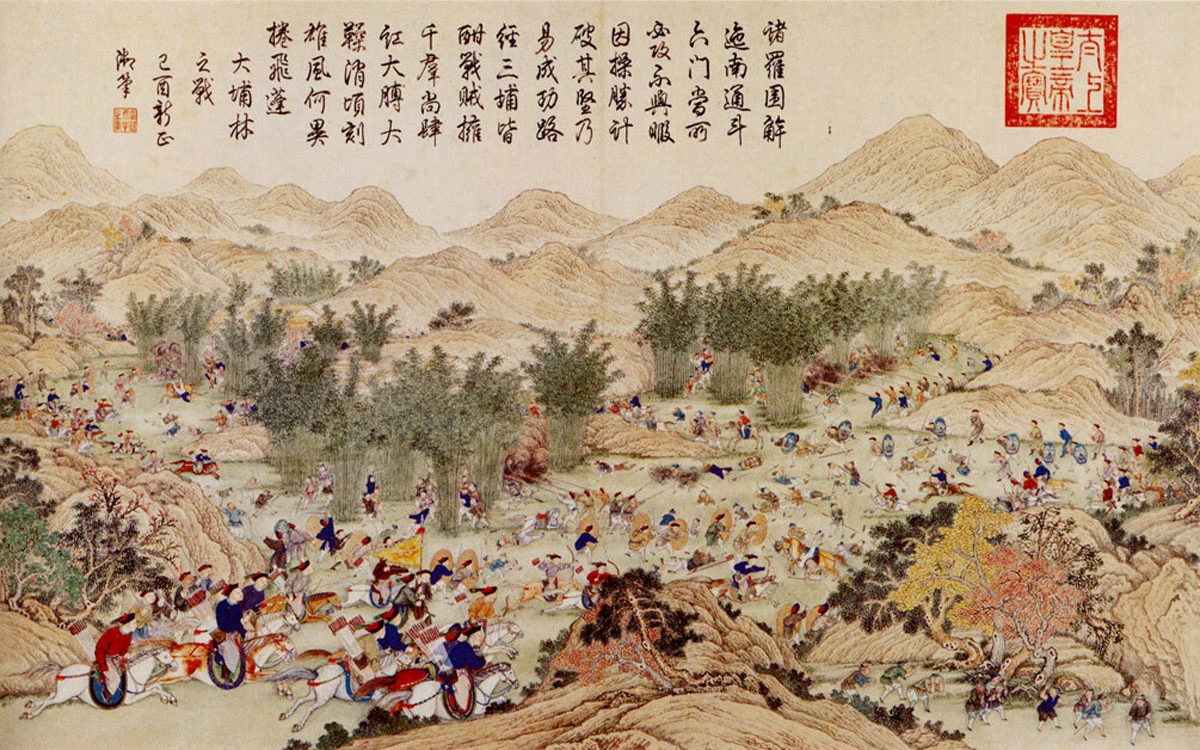
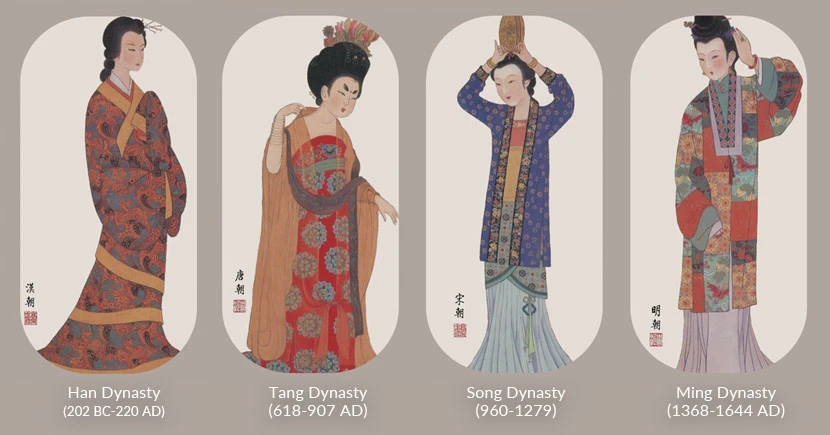
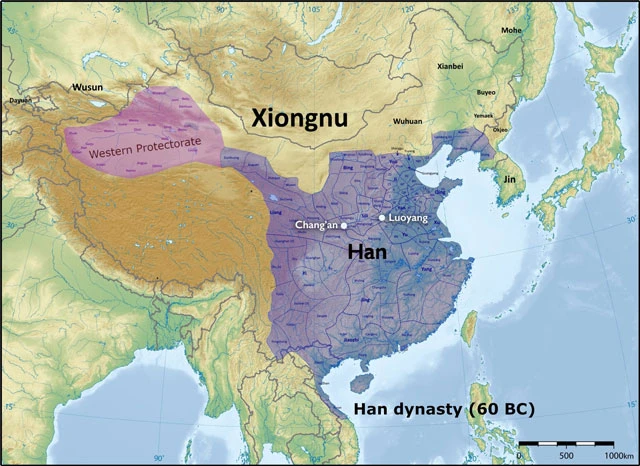
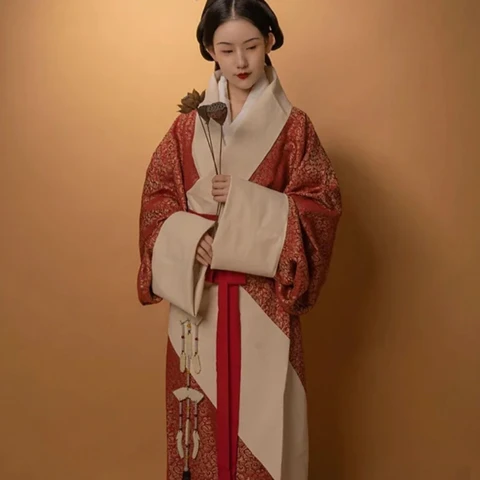
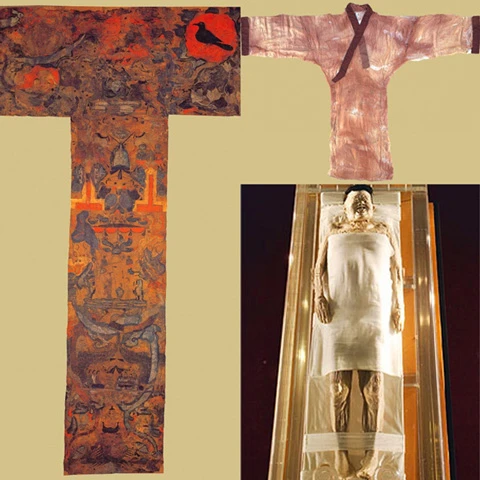
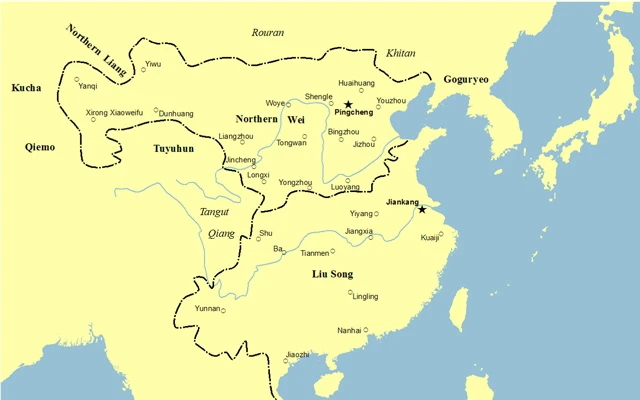
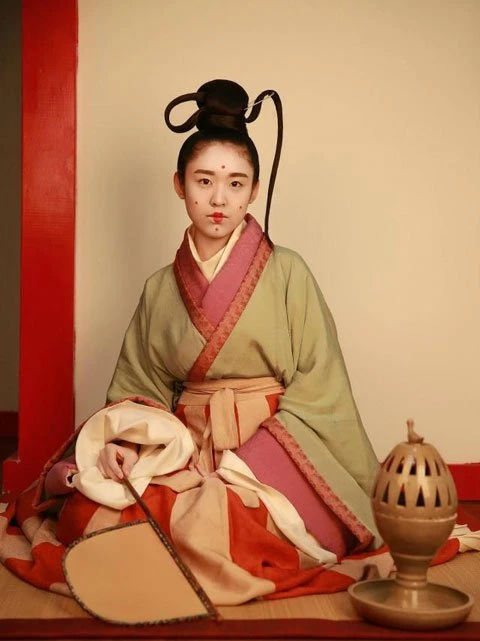
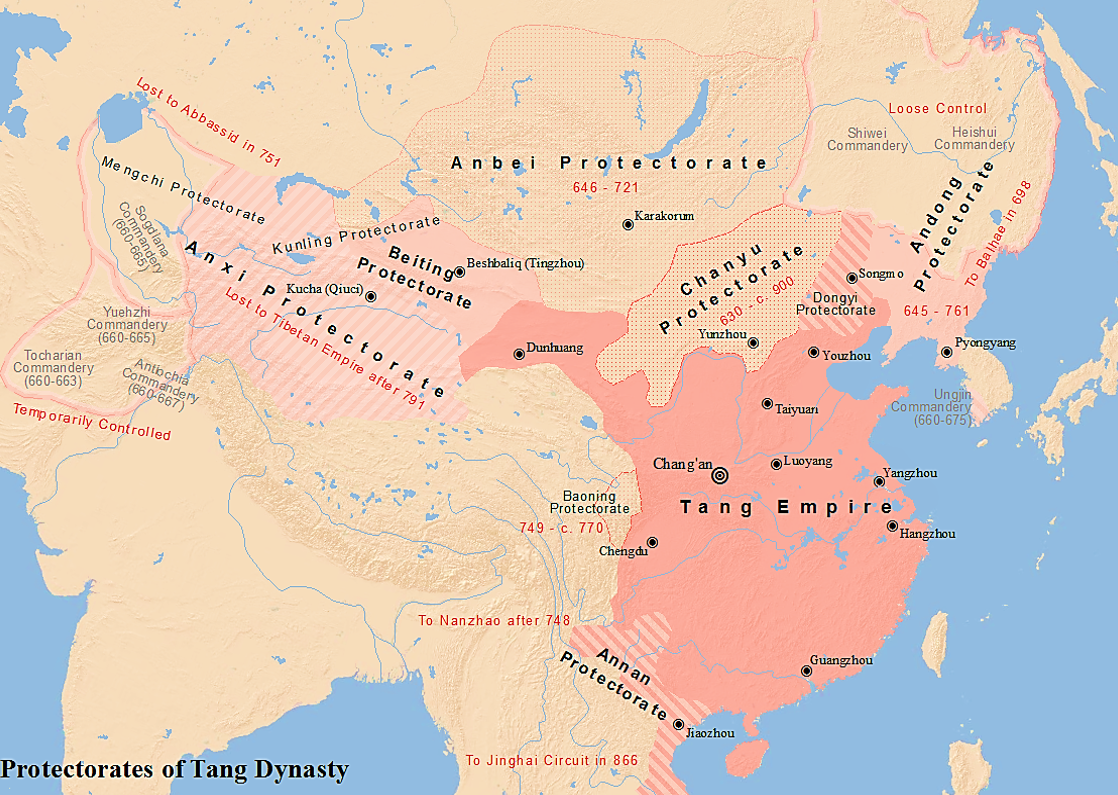

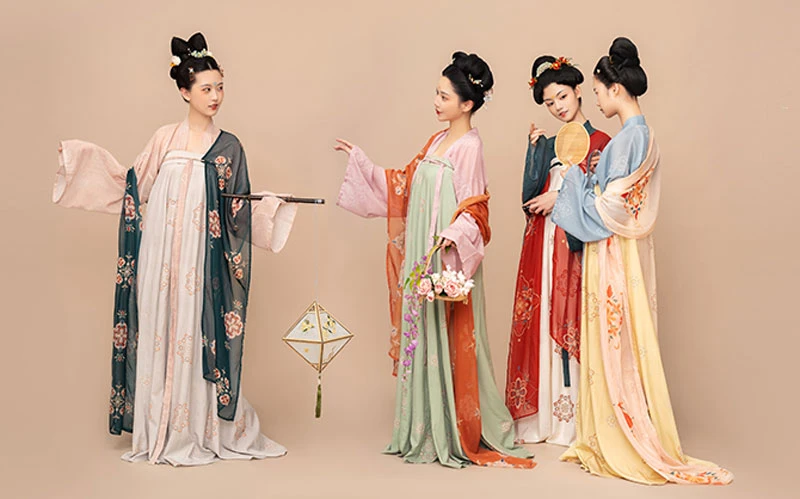
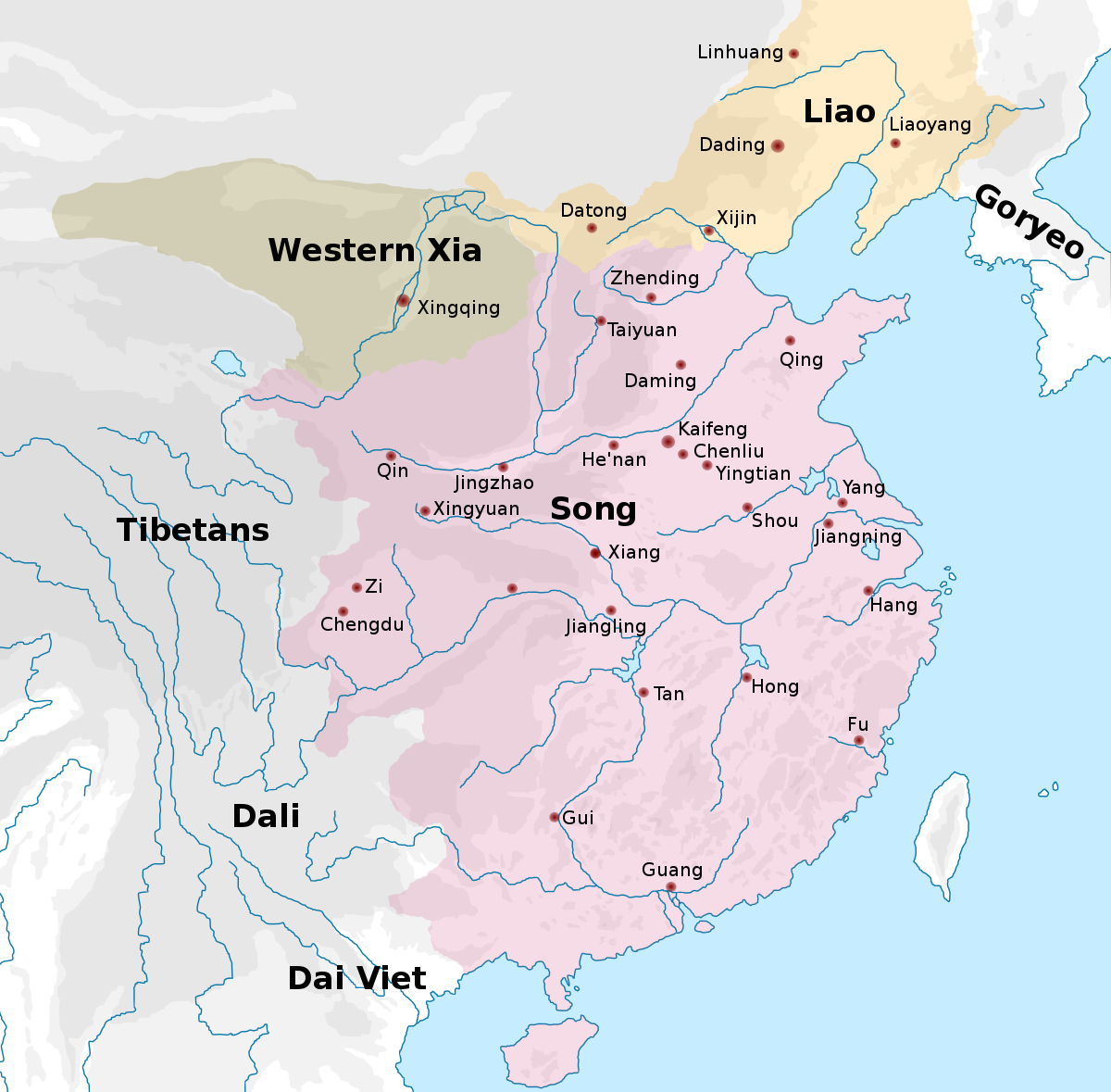
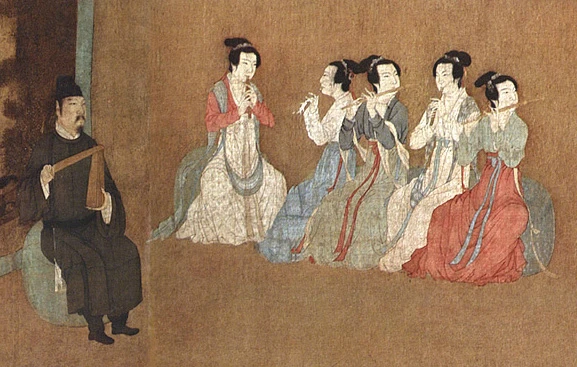
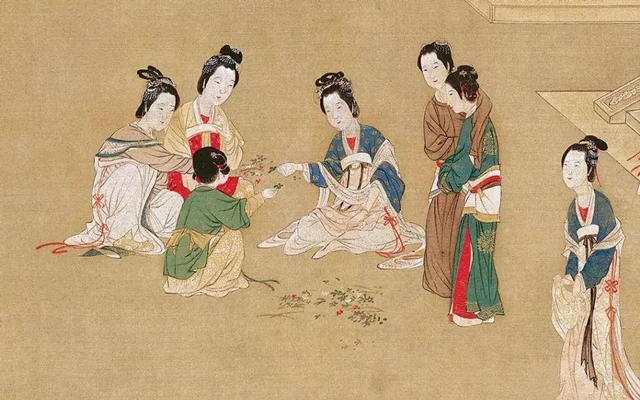
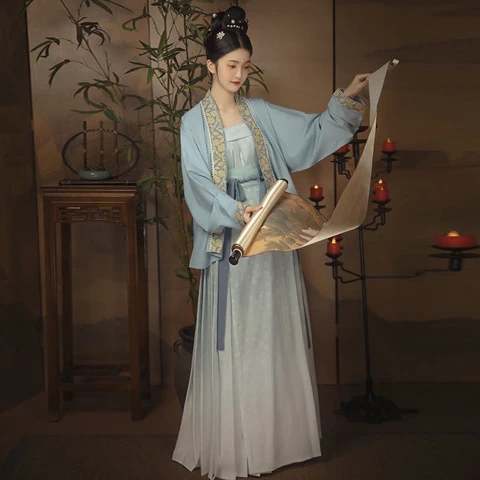

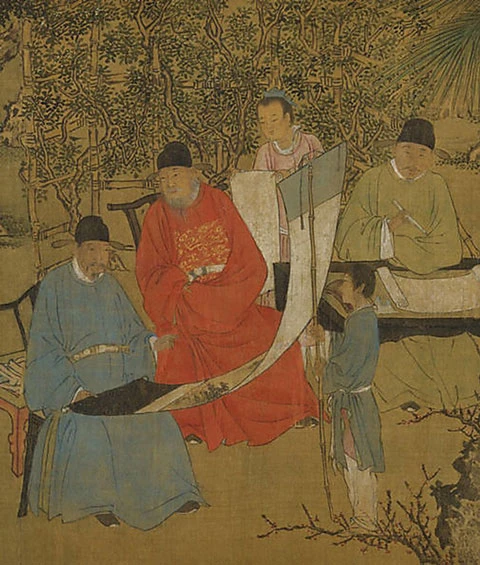


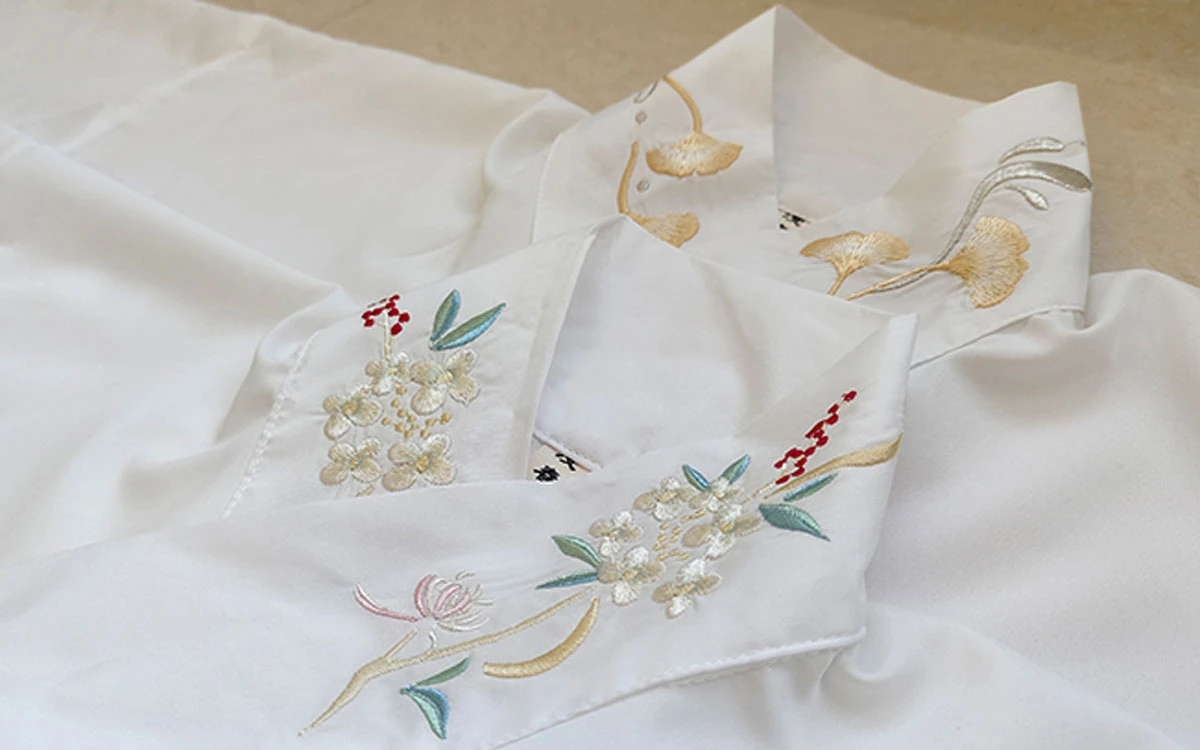
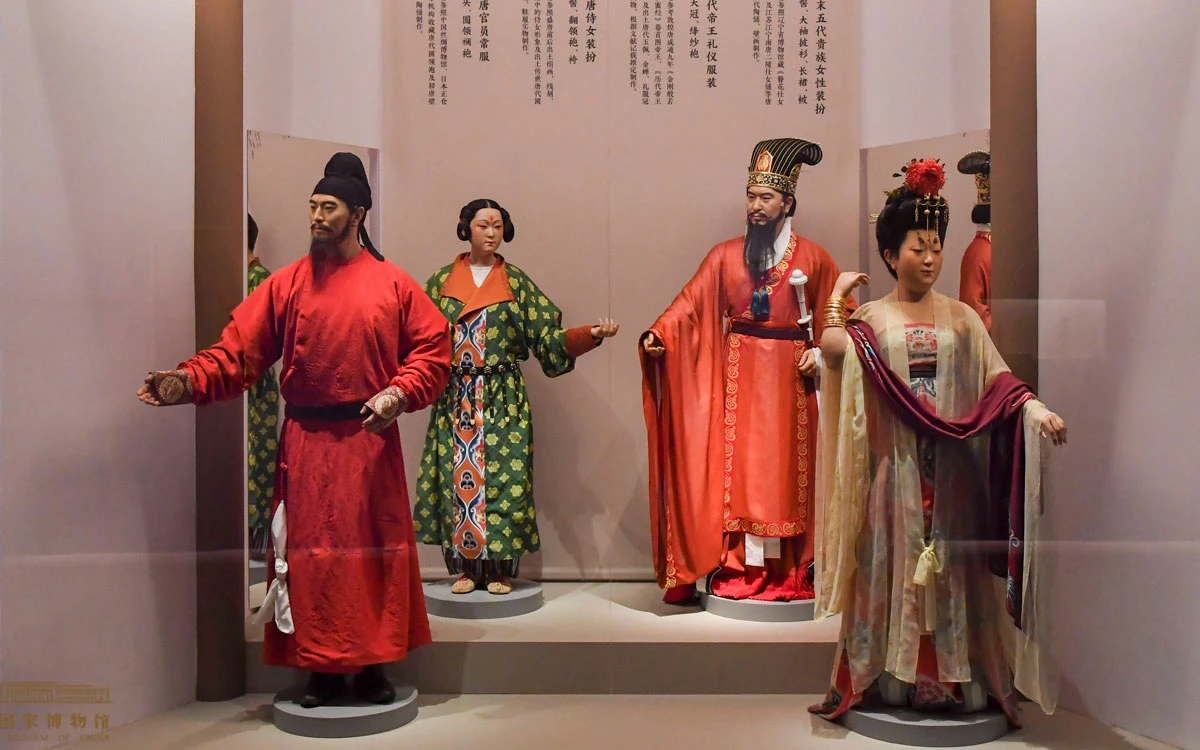

Mengingat sejarah ada suka duka
Terima kasih artikel nya
As noted by my handle, I am particularly interested in the knotted elements of Chinese clothes. So, the second (non-map) illustration in the Tang section caught my eye with the knot-only Yaopei/腰佩. As drawn, there seems to be no jade/stone element, not even an extra tassel, so without much weight, they could not have (usefully) served as Jinbu/禁步?